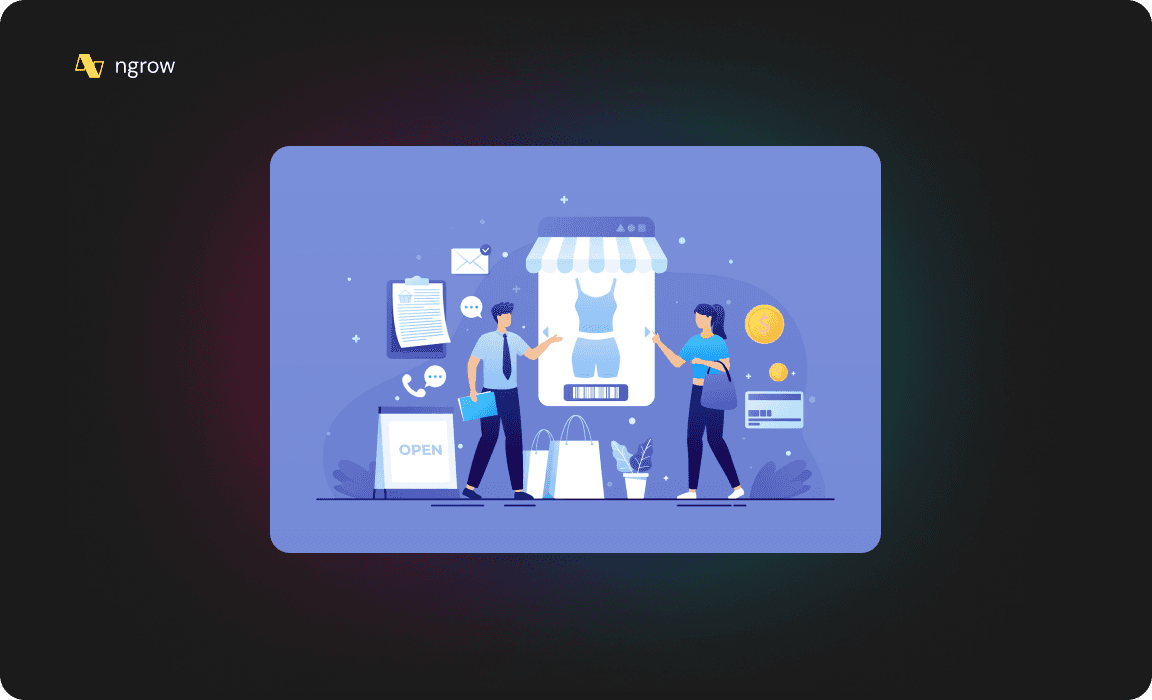2
min to read
May 13, 2024

From Clicks to Bricks: How Warby Parker Excels in Omnichannel Retailing

In the ever-evolving world of retail, the lines between online and offline shopping have become increasingly blurred. Warby Parker, an eyewear company known for its innovative business model and customer-centric approach, has been at the forefront of this shift, seamlessly integrating its digital presence with a growing network of physical retail locations. By embracing an omnichannel strategy, Warby Parker has not only disrupted the traditional eyewear industry but also set a new standard for how modern retailers can thrive in the digital age.
Understanding Warby Parker's Omnichannel Approach
Warby Parker's omnichannel strategy revolves around providing a seamless and engaging customer experience across multiple touchpoints, both online and offline. The company's journey began as an e-commerce platform, offering a convenient and affordable alternative to traditional eyewear retailers. However, as Warby Parker grew, it recognized the importance of physical retail in creating a more immersive and personalized customer experience.
Today, Warby Parker's omnichannel approach encompasses its e-commerce website, mobile app, and a network of physical retail stores, known as "showrooms." These showrooms serve as a bridge between the online and offline worlds, allowing customers to try on frames, consult with knowledgeable staff, and ultimately make purchases that are fulfilled through the company's e-commerce platform.
Key Elements of Warby Parker's Omnichannel Strategy

1. Integrated Online and Offline Experiences
One of the hallmarks of Warby Parker's omnichannel strategy is its ability to create a seamless experience for customers, regardless of whether they choose to shop online or in-person. The company's website and mobile app feature a user-friendly interface, allowing customers to browse frames, access their virtual try-on feature, and even schedule in-store appointments.
When customers visit a Warby Parker showroom, they are greeted by knowledgeable staff who can assist them in finding the perfect frames and provide guidance on prescription lenses. The in-store experience is further enhanced by the availability of digital tools, such as iPads, which allow customers to access their online account information and purchase history, ensuring a consistent and personalized experience across all touchpoints.
2. Personalized Recommendations and Styling
Warby Parker's omnichannel approach also emphasizes personalization, with the company leveraging data and technology to provide tailored recommendations and styling advice to its customers. The company's virtual try-on feature, available on its website and mobile app, allows customers to upload a selfie and virtually "try on" different frames, helping them to visualize how the glasses will look on their face.
In-store, Warby Parker's staff are trained to provide personalized styling advice, taking into account each customer's face shape, skin tone, and personal style preferences. By combining digital tools with human expertise, Warby Parker ensures that customers receive a highly personalized and engaging experience, regardless of whether they shop online or in-person.
3. Convenient and Flexible Fulfillment Options
Warby Parker's omnichannel strategy also emphasizes convenience and flexibility when it comes to fulfillment. Customers can choose to have their glasses shipped directly to their home or office, or they can opt to pick up their order at a nearby showroom. The company also offers a home try-on program, which allows customers to select up to five frames to try on at home for free before making a purchase.
This focus on convenience and flexibility has been a key driver of customer satisfaction and loyalty for Warby Parker. By offering multiple fulfillment options and making it easy for customers to try on frames before committing to a purchase, the company has been able to reduce friction in the shopping experience and build trust with its customer base.
4. Engaging Social Media Presence
Warby Parker has also leveraged social media to enhance its omnichannel strategy, using platforms like Instagram, Facebook, and Twitter to engage with customers and build brand awareness. The company regularly shares content that showcases its products, highlights customer stories, and promotes its social impact initiatives, such as its "Buy a Pair, Give a Pair" program.
By maintaining an active and engaging social media presence, Warby Parker has been able to foster a sense of community among its customers and build brand loyalty. The company's social media channels also serve as a platform for customer feedback and product reviews, helping to inform its product development and marketing strategies.
The Impact of Warby Parker's Omnichannel Strategy

Warby Parker's omnichannel approach has had a significant impact on the company's growth and success, disrupting the traditional eyewear industry and setting a new standard for customer experience in the retail sector. Here are some key outcomes of Warby Parker's omnichannel strategy:
1. Rapid Growth and Expansion
Since its launch in 2010, Warby Parker has experienced rapid growth, expanding from an e-commerce startup to a multi-channel retailer with a network of over 100 physical showrooms across the United States and Canada. The company's omnichannel strategy has been a key driver of this growth, allowing it to reach a wider customer base and provide a more immersive and engaging shopping experience.
2. Increased Customer Engagement and Loyalty
By providing a seamless and personalized experience across all channels, Warby Parker has been able to increase customer engagement and loyalty. The company's focus on convenience, flexibility, and personalization has resonated with customers, leading to high customer satisfaction scores and repeat business.
3. Strong Brand Identity and Reputation
Warby Parker's omnichannel strategy has also helped to strengthen its brand identity and reputation. The company's commitment to providing affordable, high-quality eyewear and its focus on social impact initiatives have helped to position it as a trusted and socially responsible brand in the eyes of consumers.
4. Competitive Advantage
Warby Parker's omnichannel strategy has given the company a significant competitive advantage in the eyewear industry. By offering a unique and engaging customer experience that combines the convenience of online shopping with the personalization of in-store service, Warby Parker has been able to differentiate itself from traditional eyewear retailers and attract a loyal customer base.
Lessons for Other Retailers
Warby Parker's success in omnichannel retailing offers valuable lessons for other retailers looking to adapt to the changing landscape of the retail industry. Here are some key takeaways:
Prioritize Convenience and Flexibility: By offering multiple fulfillment options and making it easy for customers to try products before purchasing, retailers can reduce friction in the shopping experience and build trust with their customer base.
Leverage Data and Technology: Retailers should use data and technology to personalize the customer experience, provide tailored recommendations, and optimize their marketing and product development strategies.
Integrate Online and Offline Channels: Seamless integration of online and offline channels is essential for creating a cohesive and engaging customer experience across all touchpoints.
Engage with Customers on Social Media: Social media can be a powerful tool for building brand awareness, fostering customer engagement, and gathering valuable feedback.
Focus on Social Impact: Retailers that prioritize social impact initiatives and demonstrate a commitment to corporate social responsibility can build trust and loyalty with their customers.
In conclusion, Warby Parker's omnichannel strategy has been a key driver of its success in the retail industry. By prioritizing convenience, flexibility, personalization, and social impact, the company has been able to disrupt the traditional eyewear market and build a loyal customer base. Other retailers looking to adapt to the changing landscape of the retail industry would do well to learn from Warby Parker's example and embrace an omnichannel approach that puts the customer at the center of their strategy.



